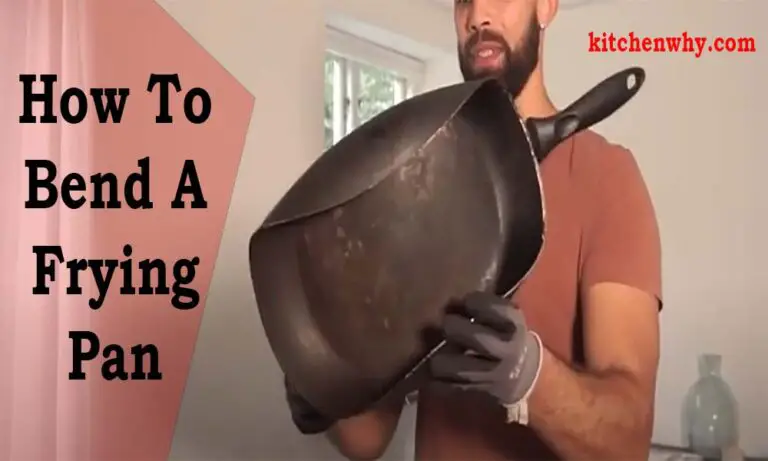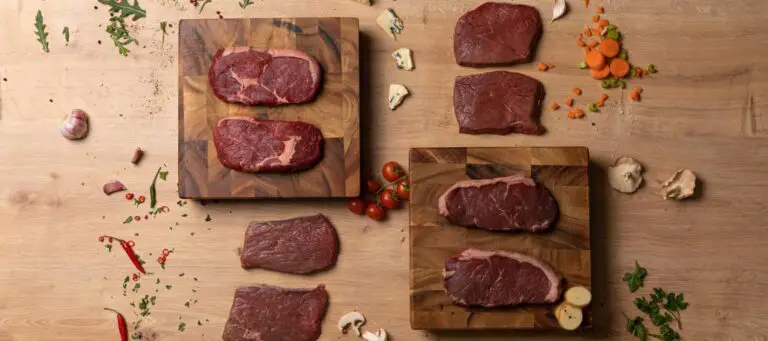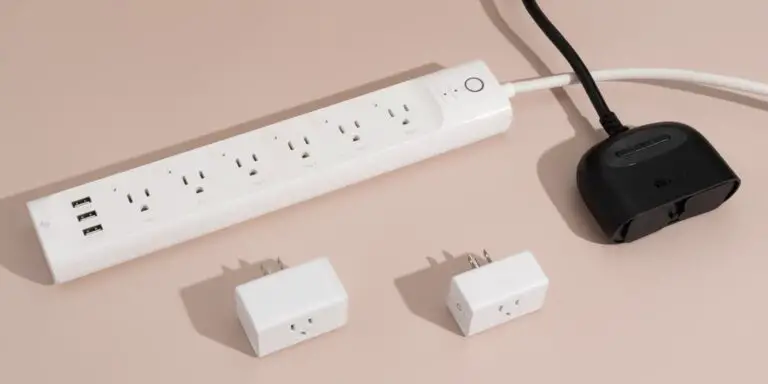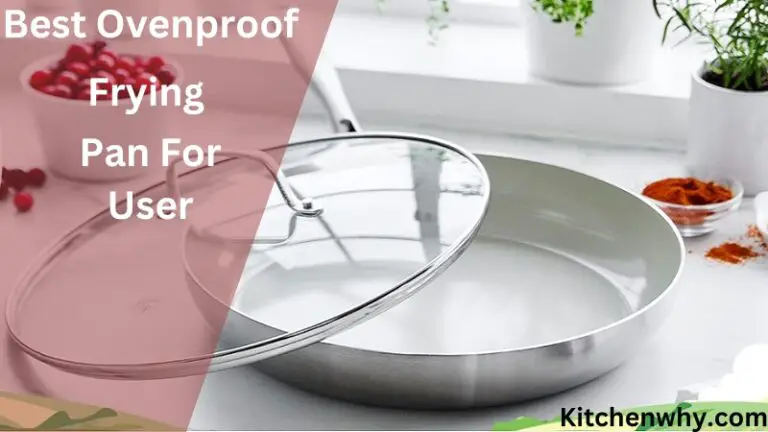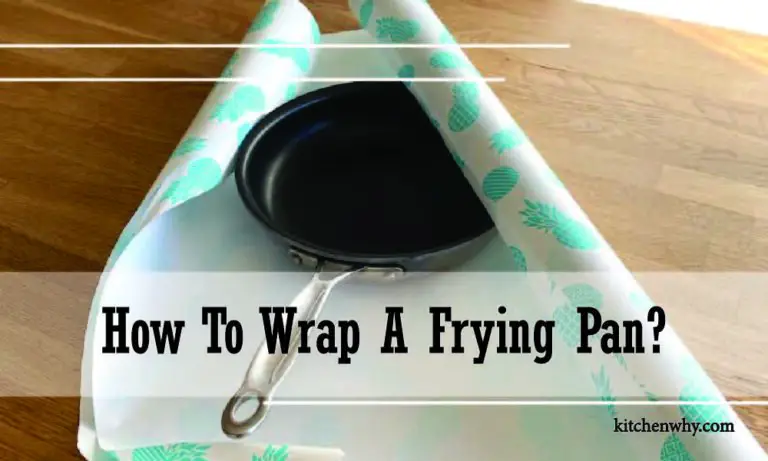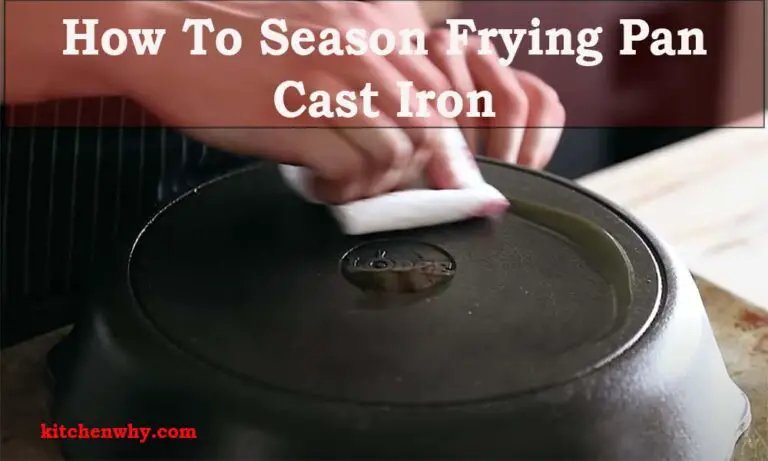How To Clean Frying Pan Bottoms? 7 Easy Steps To Clean the Best

Frying pans are a staple in every kitchen, but they can accumulate stubborn stains and grease on the bottom over time. This not only affects the taste of your food but also makes cooking a daunting task. So, you must know how to clean frying pan bottoms.
Fortunately, cleaning frying pan bottoms is an easy task that requires minimal effort and supplies. One way: to clean the frying pan bottoms, mix equal parts baking soda and water to form a paste. Apply the paste to the bottom of the pan and scrub with a non-abrasive sponge. Rinse with water.
In this article, I’ll take you through simple yet effective techniques for cleaning different types of frying pan bottoms, including stainless steel, cast iron, and non-stick. I’ll also share some tips and tricks to help you prevent future buildup and keep your frying pans in top-notch condition.
Whether you’re a seasoned chef or a beginner cook, this guide will equip you with all the knowledge you need to keep your frying pans spotless and functional for years.
How to Clean Frying Pan Bottoms
Cleaning the bottom of a frying pan can be a challenging task, especially when food residue has been burnt onto it. Here are some steps you can take to clean frying pan bottoms:
Gather Your Supplies
Before you start cleaning your frying pan, gathering all the necessary supplies is important. You will need a non-abrasive scrubber, dish soap, baking soda, vinegar, and a soft cloth or sponge. Make sure the scrubber you use is gentle and won’t scratch the surface of your pan.
Soak The Pan in Hot Water
First, soak the frying pan in hot water for about 15-20 minutes. This will help to loosen the grease and make it easier to clean. Adding a few drops of dish soap or vinegar to the water enhances the cleaning power.
If you’ve cooked a lot of bacon in your frying pan, you might notice that the bottom is covered in grease and burnt bits. Soaking the pan in hot water can help to soften the grease and make it easier to scrub off.
Scrub the Pan With A Sponge or Brush

After soaking, take a sponge or brush and scrub the bottom of the pan vigorously. You can use a bit of baking soda or salt to help remove any stubborn stains. Use a non-abrasive sponge or brush to prevent scratching the pan’s surface.
Clean with Baking Soda
If your frying pan has a lot of burnt-on food, you can use baking soda to help remove it. Sprinkle a generous amount of baking soda on the bottom of the pan and add enough water to create a paste. Use your non-abrasive scrubber to gently rub the paste onto the bottom of the pan, focusing on the areas with the most buildup.
Use Vinegar
If baking soda doesn’t work, try soaking the pan cleaning. Vinegar is a natural cleaning agent that can help to remove stubborn stains and odors from your frying pan.
Fill the pan with enough vinegar to cover the bottom and let it sit for 5-10 minutes. Use your non-abrasive scrubber to gently rub the bottom of the pan, focusing on the areas with the most buildup.
Rinse the Pan with Hot Water
After scrubbing, rinse the frying pan with hot water to remove any remaining grease or cleaning agents. Be sure to rinse thoroughly to avoid leaving any residue on the pan.
If your frying pan still has stains or odors, repeat this process until they are gone.
Dry the Pan Thoroughly
The final step is to dry the frying pan thoroughly. You can use a towel or leave it to air dry. Be sure to store the pan in a dry place to prevent rusting.
Following these steps, you can easily clean the bottom of your frying pan and restore it to its former glory. After each use, clean your frying pan thoroughly with dish soap and hot water. This will help to prevent buildup and keep your pan looking like new.
Some Tips and Tricks To Help You Prevent Future Buildup In Frying Pan

Here are some ways to keep your frying pan from getting dirty again:
- Use the right oil: Use oils with high smoke points, like canola, veggie, or peanut oil, which can handle high temperatures without breaking down and leaving dust in the pan.
- Properly clean the pan: After each use, wash it well with hot warm water and a sponge or soft brush. Make sure to clean all the cracks and crevices to get rid of any food or oil waste.
- Season the pan: Seasoning gives the pan a natural non-stick covering that keeps food from sticking and prevents buildup. Put a thin layer of oil on the pan and heat it on the stove until the oil starts to smoke. Take it off the heat and let it cool. Then, use a paper towel to wipe off any extra oil. ( You can read How To Season T Fal Frying Pan? 4 Easy Steps)
- Avoid using metal tools: Metal utensils can scratch the surface of your pan, making small holes where food can get stuck and build up. Use rubber or wooden tools instead.
- Don’t put too much food in the pan: Too much food can cause the food to give off wetness, which can cause steaming and stop the food from cooking properly. This can also make bits of food stick to the pan and build up.
- Use a splatter screen: A splatter screen can help keep oil from splattering and sticking to the pan, which can lead to buildup.
By using these tips, you can stop food from sticking to your cooking pan and keep it in good shape for many years.
Read My More Informative Post:
Frequently Asked Questions
Learn how to clean frying pan bottoms with these five commonly asked questions and answers below.
Why is it important to clean frying pan bottoms?
Cleaning frying pan bottoms is important because it removes burnt or stuck-on food particles, which can affect the quality of your food and damage the surface of your pan. A clean frying pan bottom also helps prevent bacteria buildup and prolongs your pan’s lifespan.
Can I clean a non-stick frying pan’s bottom the same way as a regular frying pan?
No, cleaning a non-stick frying pan requires a different approach. Avoid using abrasive cleaning materials or harsh chemicals, which can damage the non-stick coating. Instead, follow the manufacturer’s instructions for cleaning and use a soft cloth or non-abrasive scrubbing pad.
How often should I clean my frying pan bottom?
It’s best to clean your frying pan bottom after each use to prevent the buildup of burnt-on food and grease. Regular cleaning also helps maintain the quality of your food and prolongs the lifespan of your pan.
Can I use a dishwasher to clean a frying pan bottom?
It depends on the type of frying pan and its manufacturer’s instructions. Some frying pans are dishwasher safe, while others are not. It’s always best to check the manufacturer’s instructions before putting any cookware in the dishwasher. Additionally, if the frying pan has burnt-on food or grease buildup, it’s recommended to clean it by hand first to ensure a thorough cleaning.
How to Clean Bottom of Pan with Baking Soda and Vinegar!
Wrap Up
In conclusion, knowing How To Clean Frying Pan Bottoms is essential for maintaining the quality and durability of your cookware. With the various methods and cleaning agents available, choosing the one that best suits the type of frying pan you have and the level of cleaning needed is important.
Whether it’s using baking soda and vinegar, a commercial cleaner, or a homemade solution, taking the time to clean your frying pan bottoms will not only improve its appearance but also prevent damage and prolong its lifespan. Remember to follow the manufacturer’s instructions and take extra care when dealing with non-stick or delicate pans.
By incorporating these simple cleaning techniques into your kitchen routine, you can ensure that your frying pans remain in top condition and continue to produce delicious meals for years to come.

